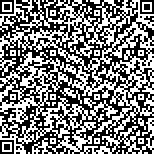| 本文已被:浏览 599次 下载 433次 |

码上扫一扫! |
| 药用植物苦参EST-SSR标记的开发及DNA指纹图谱的构建 |
|
段永红1, 雷海英2, 张旭1, 吴玉香1, 孙毅3,4
|
|
|
| (1.山西农业大学 农学院, 山西 太谷 030801;2.长治学院 生物科学与技术系, 山西 长治 046011;3.山西省农业科学院 生物技术研究中心, 太原 030006;4.农业部黄土高原作物基因资源与种质创制重点实验室, 太原 030031) |
|
| 摘要: |
| 为挖掘苦参优异种质资源,利用大宗药材苦参现有的EST资源开发EST-SSR标记,分析不同地理种源苦参的遗传多样性,构建其特有的DNA指纹图谱。通过生物信息学手段对NCBI数据库中苦参EST序列进行SSR查找,利用Primer 5.0软件设计EST-SSR引物,筛选多态性引物检测苦参样本DNA差异,采用UPGMA聚类分析样本的遗传多样性,并构建DNA指纹图谱。经分析得到92条Unigene,从中发掘出126个EST-SSR位点分布于61条Unigene上。SSR检出率为66.30%,平均分布距离为0.512 kb;共搜索到61种EST-SSR的重复基元,五核苷酸和六核苷酸重复是主要的重复类型,二者出现频率分别为68.25%和25.40%,没有三核苷酸出现,AAAAT/ATTTT与AAGTGG/CCACTT是五、六核苷酸的优势重复类型;设计出65对苦参的EST-SSR引物,随机合成26对,筛选出18对多态性引物可用于苦参样本遗传多样性分析,共检测出77个等位变异,平均每对引物检测出4.3个基因位点,引物多态性比率为69.2%;聚类分析结果表明:苦参材料首先按照居群聚类,在相似系数为0.73处,供试材料按亲缘关系远近分为5大类,相同或相近产地来源的苦参样本聚为一类,呈现出一定的地域性分布规律;筛选到2对核心引物DYH011与DYH018,构建了苦参样本的DNA指纹图谱,作为对不同产地来源苦参鉴定和溯源的依据。 |
| 关键词: 苦参 EST-SSR 标记开发 遗传多样性 指纹图谱 |
| DOI:10.11841/j.issn.1007-4333.2018.09.03 |
| 投稿时间:2017-09-11 |
| 基金项目:国家自然科学基金项目(21201024)、山西省自然科学基金(201701D121105)、山西省重点学科建设经费(FSKSC)、山西省财政支农项目(2015TGSF-10) |
|
| Development of EST-SSR markers and construction of DNA fingerprint in Sophora flavescens |
|
DUAN Yonghong1, LEI Haiying2, ZHANG Xu1, WU Yuxiang1, SUN Yi3,4
|
| (1.College of Agronomy, Shanxi Agricultural University, Taigu 030801, China;2.Department of Biology Science & Technology, Changzhi University, Changzhi 046011, China;3.Biotechnology Research Center, Shanxi Academy of Agricultural Sciences, Taiyuan 030031, China;4.Key Laboratory of Crop Gene Resources and Germplasm Enhancement on Loess Plateau of Ministry of Agriculture, Taiyuan 030031, China) |
| Abstract: |
| In order to explore the elite germplasm resources of Sophora flavescen, EST-SSR markers were developed using the existing EST resources, the genetic diversity of the herb from various geographic locations was analyzed, and their DNA fingerprints were constructed. SSR information was obtained from NCBI by bioinformatics methods, and EST-SSR primers were designed by the software Primer 5.0 Plus. The DNA samples of Sophora flavescens were used as templates in PCR amplification with polymorphic primers. Their genetic diversity was analyzed based on UPGMA clustering. DNA fingerprints were constructed. A total of 92 Unigenes were obtained from Sophora flavescentis EST data bank, among which 126 simple sequence repeats were distributed in 61 Unigenes accounting for 66.30% of the total number of Unigenes. The frequency of SSRs was 0.512 kb. Penta-nucleotide and hexa-nucleotide repeats were the dominant types among the obtained Unigenes accounting for 68.05% and 25.40%, respectively. No trinucleotide appeared. AAAAT/ATTTT and AAGTGG/CCACTT were respectively the most abundant motifs for penta-nucleotide and hexa-nucleotide motifs. The 65 pair primers were designed by Primer 5.0 and 26 pairs of which were randomly synthesized. Among them, 18 pairs produced clear and stable bands. The genetic diversity of 48 samples from 12 geographical populations was investigated. A total 77 loci with an average of 4.3 loci for each pair of primers were detected, and the polymorphic primer ratio was 69.2%. The materials were divided into 5 groups according to the genetic relationship in Clustering. Materials with the same or close origins were clustered into one group, indicating their geographical distribution characteristics. Two pairs of core primers DYH011 and DYH018 were selected, and the DNA fingerprints of Sophora flavescens were constructed, which could be used as a basis for the rapid and accurate identification and traceability of different geographical sources. |
| Key words: Sophora flavescens EST-SSR marker development genetic diversity fingerprinting |